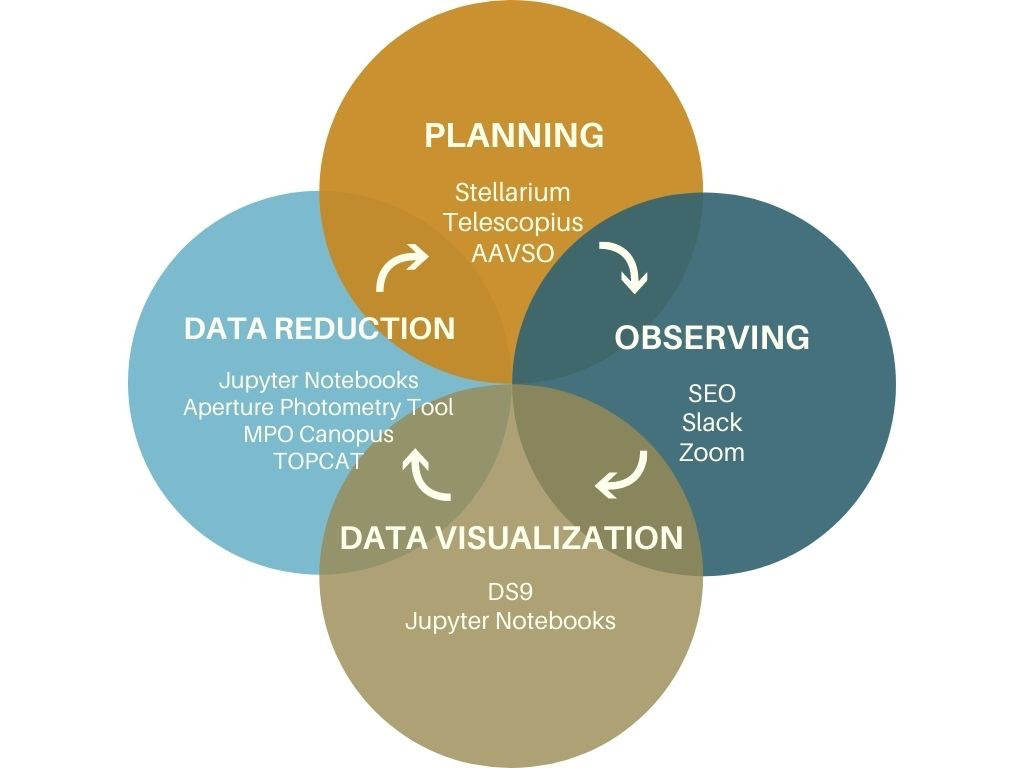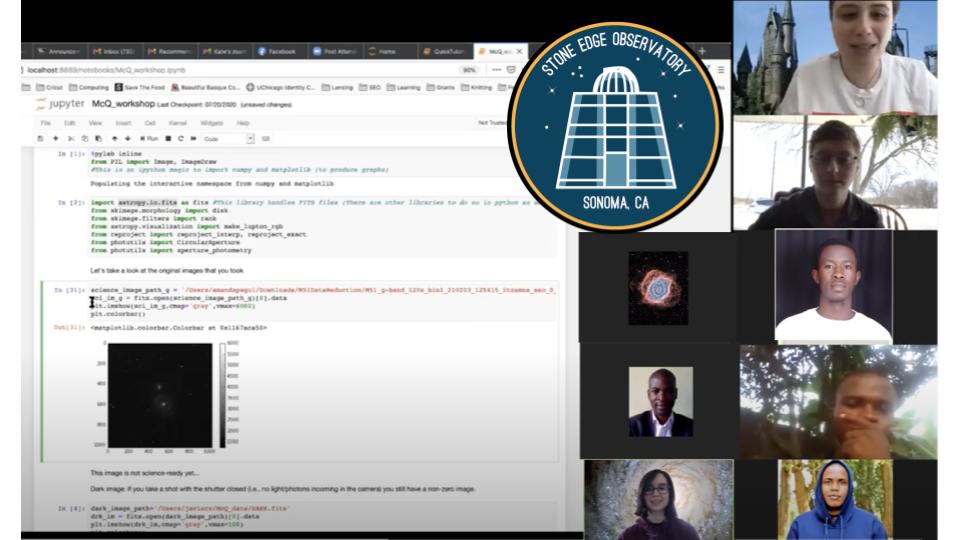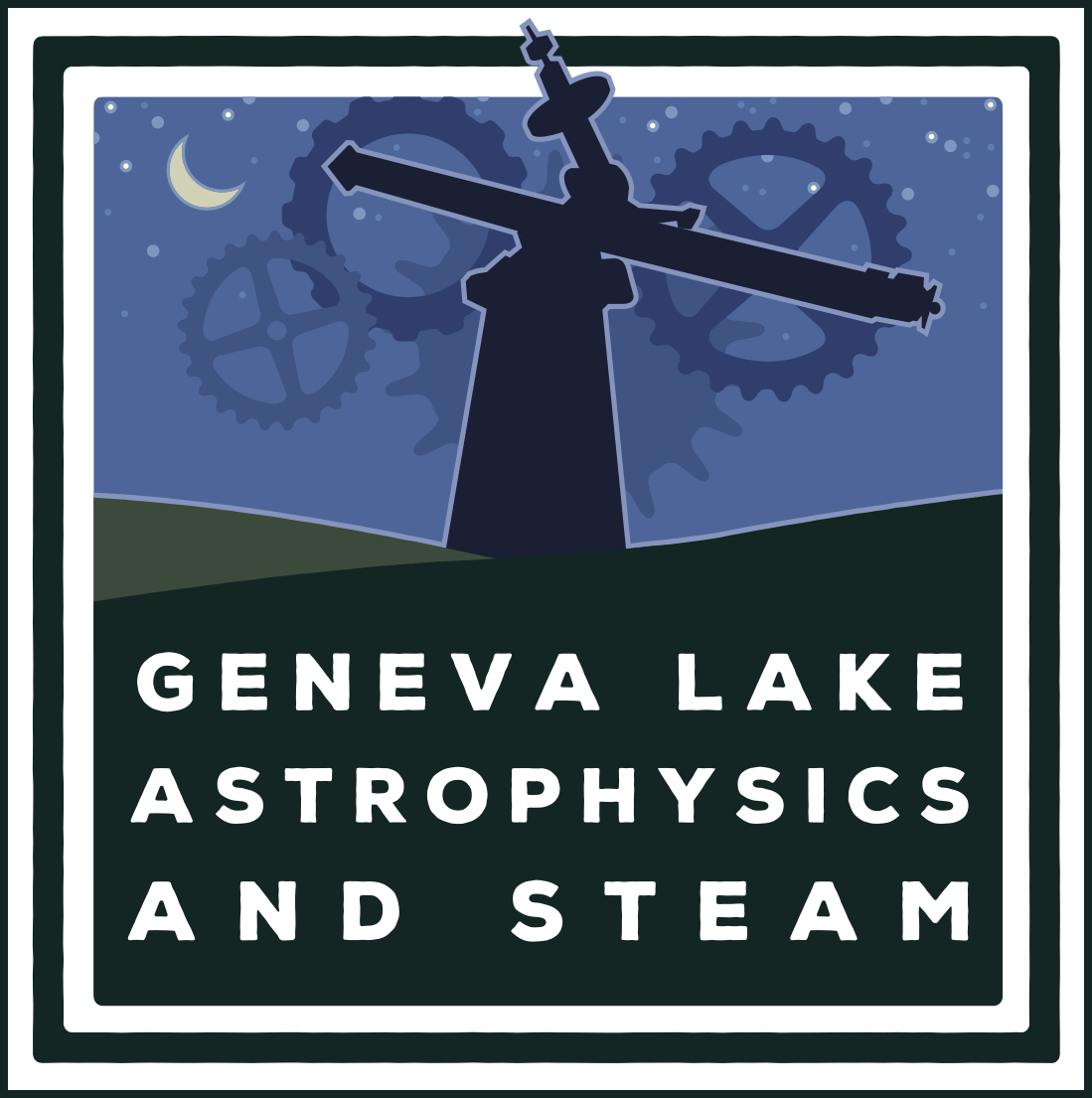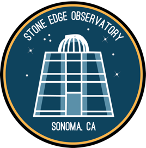The Stone Edge All-Sky Survey — Addressing Undergraduate Research Experiences During the Pandemic
Kate Meredith GLAS Education
GLAS (Geneva Lake Astrophysics and STEAM) Education operates a 0.5-meter telescope in Sonoma, California, to support authentic research experiences for students. The telescope has been used consistently over the past ten years as a tool to introduce high school and undergraduate students to the fundamentals of telescope operations, observing session planning, and data reduction. Over the past ten years, Stone Edge Observatory (SEO) has provided data of sufficient quality and quantity to support student research publications to the Journal of the Association of Variable Star Observers and the Minor Planet Center.
During the pandemic, SEO took on greater importance as GLAS responded to the growing needs for remote international collaboration, partnered with the West African and Southern African Regional Offices of Astronomy for Development (WAROAD and SAROAD) to support undergraduate and graduate students whose studies were interrupted. Amanda Pagul, SEO astronomer and PhD candidate at the University of California Riverside, suggested that an all-sky survey using the SEO telescope should be the central focus of the collaboration. Such a project’s cyclical nature allows for ongoing scientific aims to be met and new students to enter the project at specific intervals. All participants join in a continuous process of skill development and mentorship. Individual or small group research can be launched as prerequisite skills are developed and professional mentors are identified. The students agreed, and with the addition of the required acronym, supplied by Katya Gozman (PhD student from the University of Michigan), the Stone Edge All-Sky (SEAS) Survey was born.
The SEAS Survey
 The SEAS Survey aims to build a map of the entire sky visible to the SEO telescope. The primary goal of this project is to establish a legacy database of consistently and professionally reduced data. Important educational goals are part of the collaboration within the context of providing students the opportunity to contribute relevant and publishable scientific findings. Among them:
The SEAS Survey aims to build a map of the entire sky visible to the SEO telescope. The primary goal of this project is to establish a legacy database of consistently and professionally reduced data. Important educational goals are part of the collaboration within the context of providing students the opportunity to contribute relevant and publishable scientific findings. Among them:
-
Mapping the distribution of stars across our galaxy to answer questions about how the stellar density changes as a function of the galactic latitude angle, and exploring the rate at which it changes.
-
Performing time series analyses to understand motions and properties of celestial bodies, including asteroids, comets, stellar proper motion, and supernovae.
-
Enabling follow-up observations of phenomena that occur in real-time. This includes regularly checking databases that report real-time phenomena such as gravitational waves, supernovae, or gamma ray bursts.
-
Exploring parameter space inaccessible to other telescopes: SEO can capture data from bright targets without risking damage to the charge-coupled device (CCD) or completely saturating the image. In addition, SEO is equipped with the SDSS filters, opening the door to high precision photometry using the SDSS photometric system.
Building a Sustainable Collaboration
 The collaboration began simply by opening SEO remote operation and observing sessions to leaders with the WAROAD and SAROAD, all of whom hold advanced degrees and teaching positions in astronomy and physics, and a few of their students. These interactions helped build an understanding of different educational systems and cultures. Offline meetings via Zoom were held to discuss how to advertise the opportunity, the country’s perceived needs, and how to overcome barriers to access. These meetings led to several actions.
The collaboration began simply by opening SEO remote operation and observing sessions to leaders with the WAROAD and SAROAD, all of whom hold advanced degrees and teaching positions in astronomy and physics, and a few of their students. These interactions helped build an understanding of different educational systems and cultures. Offline meetings via Zoom were held to discuss how to advertise the opportunity, the country’s perceived needs, and how to overcome barriers to access. These meetings led to several actions.
The first step was to establish weekly meetings in addition to observing sessions. The group directs the content of the meetings to address the skills needed to carry out an all-sky survey. Topics included the use of Stellarium, Telescopius, and Jupyter notebooks, data reduction, and planning observing sessions. Coding in python has been a regular topic as well as creating presentations and papers as the groups produce results. All sessions are recorded and uploaded to a private playlist on YouTube for students’ reference. Inconsistent internet access made this an essential part of keeping the group connected and in sync. These meetings were held at times designed to maximize ease of participation across African time zones.
A next step that proved to be critical to the stability and expansion of SEAS Survey was a grant by the International Astronomical Union to GLAS and the WA and SA ROADs to provide internet hotspots for students with limited or no internet connection. GLAS developed a survey that was used to gather application information as well as to understand individual goals and students’ levels of experience. Forty-three students applied to be part of the project. The WA and SA ROADs were responsible for choosing the students who receive data access support (approximately 20). Registrants are from Nigeria, Zambia, Cameroon, South Africa, Mauritius, and Madagascar.
Communication and consistent participation continue to be a challenge for the project. All students are connected with Slack accounts and a Google Classroom where they can access a rich array of SEO-specific resource materials. The Google classroom also allows mentors to create surveys and assessments to track student progress. GLAS staff have found that WhatsApp communications have helped get students started but consistent participation, particularly for women, continues to be challenging.
Anecdotally, GLAS has found that a collaborative environment (via Zoom) where students regularly ask questions, contribute ideas, and speculate about observations, has been slow to develop. Cultural differences and inconsistent connectivity appear to be the primary reasons. In response, GLAS staff have paid regular attention to encouraging student input and conversation. Leaving sufficient space in the discussions is helpful, as is allowing time during meetings to share non-projects topics. Setting up a recipe channel in Slack and having weekly conversations around holiday traditions and food have helped build a positive group dynamic. Trying out recipes or even sharing the adventures of finding proper ingredients has built conversation and rapport. Making personal contact via WhatsApp with students who are not fully engaged often leads to uncovering barriers that were not recognized previously, such as family expectations, travel and traffic issues, and holidays that we are not aware of.
Early in the collaboration, there was a strong tendency to defer to GLAS leadership in almost every matter. We see an increased willingness to express needs and propose solutions as time goes by. It is our hope that as mentors in Nigeria and Zambia emerge from within the project, clear communication, consistent participation, and student engagement will increase. To date, the collaboration has made three presentations at two science conferences, submitted one paper, and has two upcoming submissions to the Minor Planet Center.
Although we are currently unable to accommodate additional students, we are happy to take your questions and comments. If you would like to replicate this project in partnership with GLAS and the North American Regional Office of Astronomy for Development or join one of our meetings, please contact Kate Meredith.



